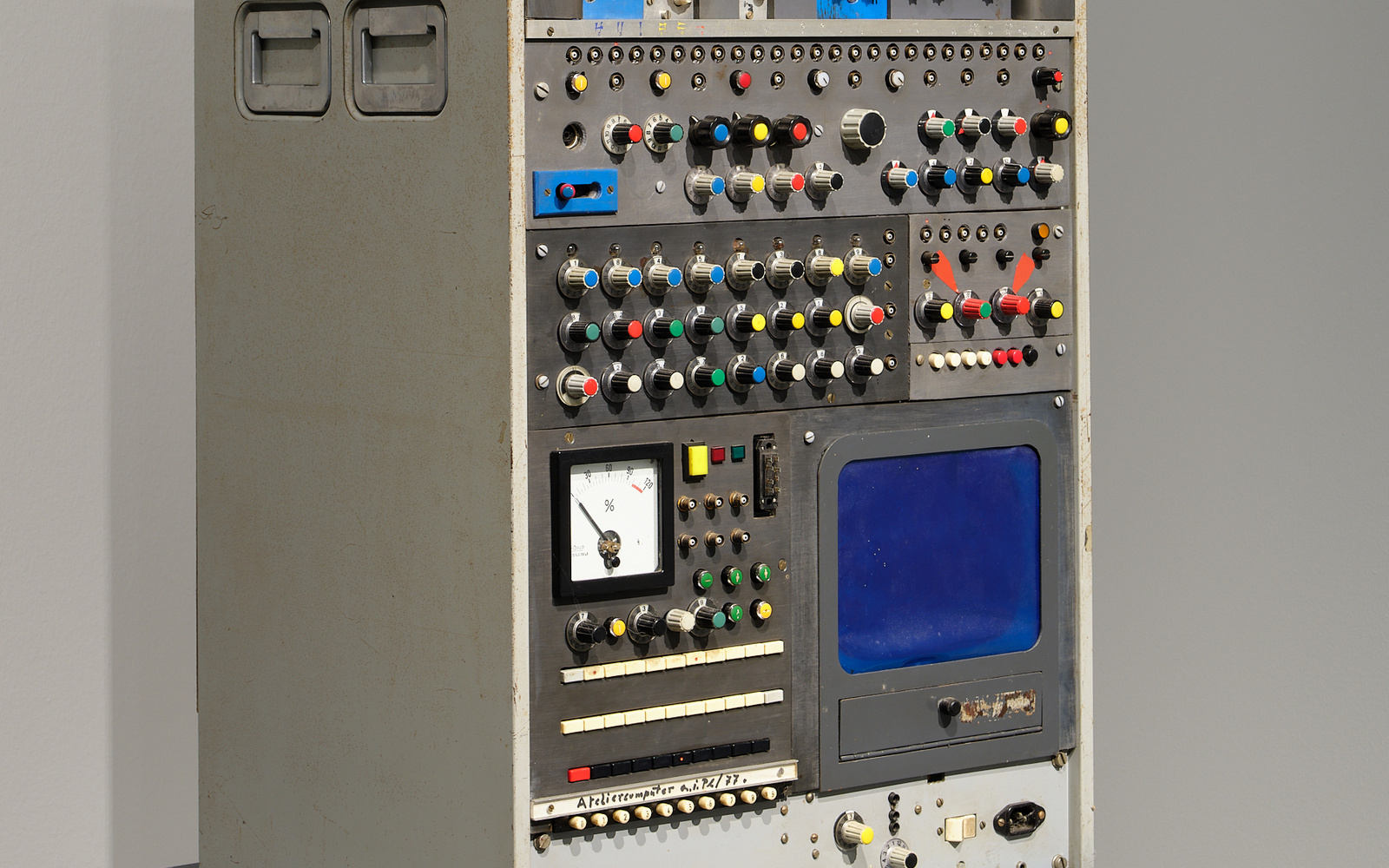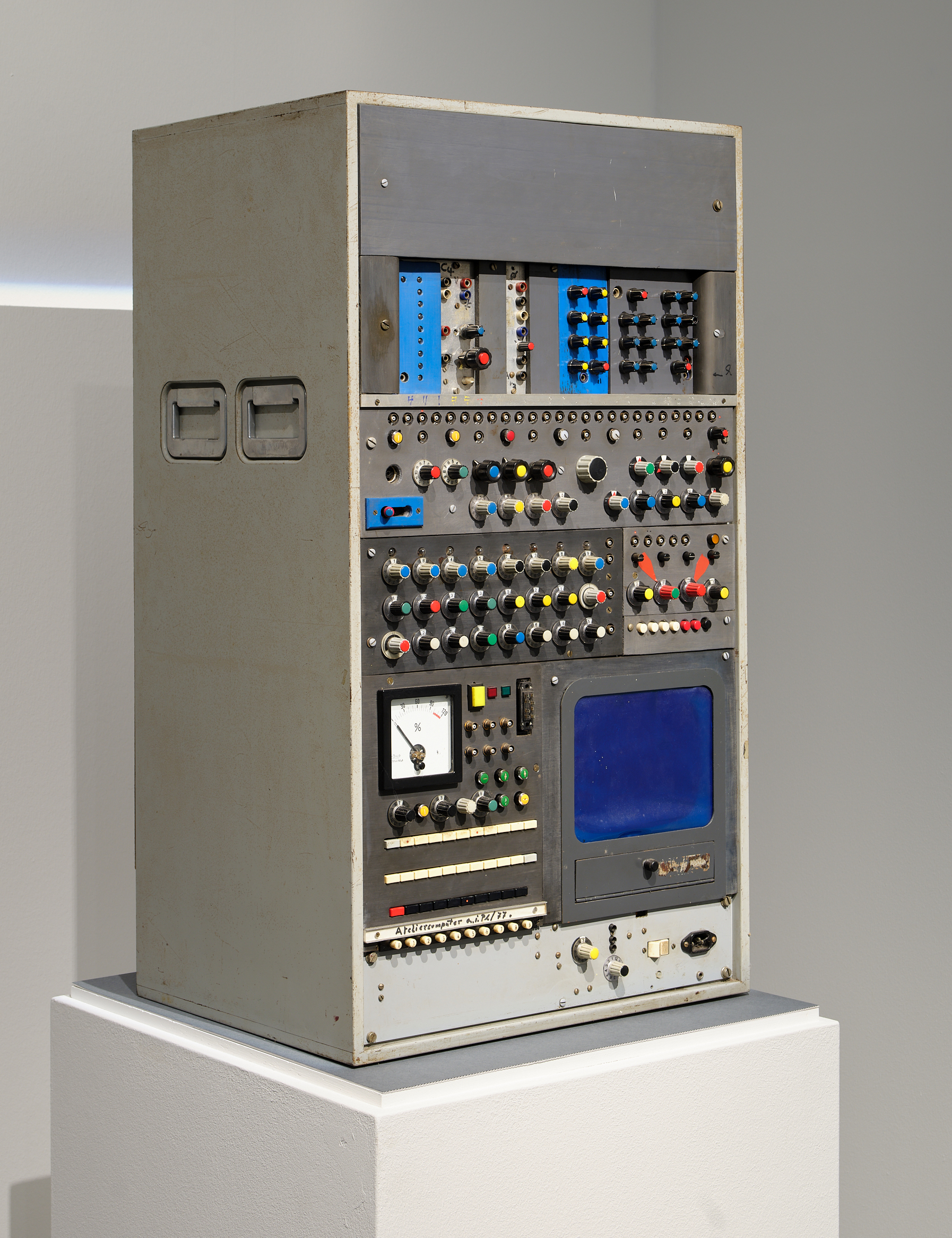Ateliercomputer a.i.70/73
- Title
- Ateliercomputer a.i.70/73
- Medium / Material / Technic
- Hybrid computer
In 1966, the artist Otto Beckmann began to explore the possible use of computer technology for art and literature and founded the “Experimental Working Group Ars Intermedia.” In 1968/1969, his son Oskar Beckmann began developing a “studio computer.” It was put into operation in June 1970 as the »Ateliercomputer a.i.70« and, after various extensions, was completed in 1971 as the »a.i.70/71« version.
The reason for building the studio computer was, on the one hand, the desire for independence: at that time, access to computers was almost exclusively possible via computer centers at universities or major corporations. The second and more decisive reason, however, was a specific view of the computer as an artistic medium. The hybrid computer developed by Oskar Beckmann enabled a different way of working than the digital computers available in Europe at the time: Otto Beckmann was able to interact intuitively with the digital-analog studio computer instead of having to translate an artistic idea into a computer language, transfer it onto punch cards, and wait for the result. Programming was done via buttons and knobs with largely automated subroutines and the ability to intervene in the running program. “The art-historical caesura set by computer art also arizes from a new relationship to the tool. For the first time in history, the creative human being, the artist, is given an intelligible tool with a capacity for dialogue, which offers reflections and aspects of a partnership.“ (Otto Beckmann, 1975)
In dialogue with his father, Oskar Beckmann continuously expanded the possibilities of the studio computer until 1979. The studio computer used digital randomization processes with definable statistical properties, so-called Markoff chains. The random events generated in this way could be visualized via a storage oscilloscope and output as sound via a sound transducer. The studio computer was used to create electronic computer graphics, designs for sculptures, sound sequences, image-sound identical films, and computer-generated laser structures.

